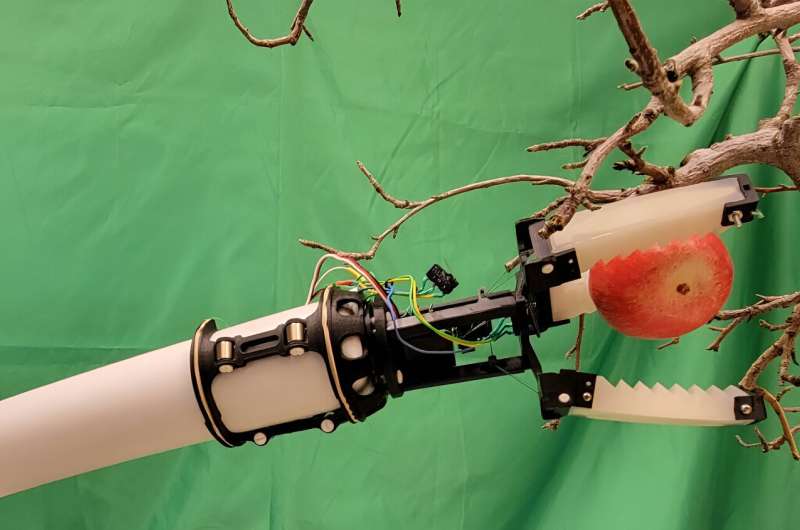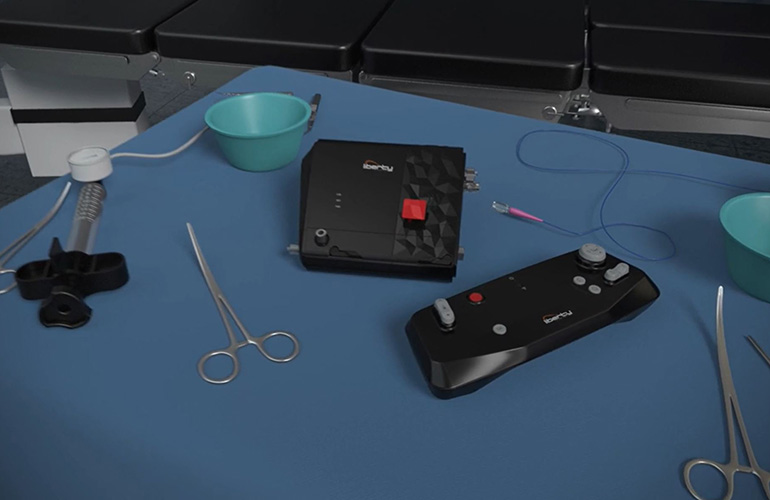In a groundbreaking development that could revolutionize the agricultural industry, researchers at Washington State University (WSU) have created a robotic gripper capable of gently harvesting apples without causing damage to the fruit. This innovative technology is part of a larger robotic system aimed at addressing the persistent labor shortages faced by Washington farmers.
The research team, led by Chris Ninatanta, a Ph.D. student in WSU's School of Mechanical and Materials Engineering, recently published their findings in the proceedings of the IEEE 7th International Conference on Soft Robotics. Ninatanta, who grew up in Yakima, Washington, and has firsthand experience in fruit picking, expressed hope that this project will significantly benefit the agricultural community.
The lightweight gripper, weighing approximately two-thirds of a pound, utilizes three cables to control its 3D-printed hard plastic fingers, which are tipped with silicone rubber. This design allows for a delicate yet firm grasp, ensuring that apples are plucked from trees without bruising or damaging the fruit. The gripper's efficiency is impressive, with a success rate of over 87.5% in orchard tests.
Cost-effectiveness is a key feature of this new technology. At just $30 to produce, the gripper includes a simple switch mechanism for grasping and releasing apples. This affordability could make the technology accessible to a wide range of farmers and orchards.
The development of this robotic system comes at a crucial time for Washington's apple industry. As the nation's leading apple producer, Washington's apple farms contributed over two billion dollars to the U.S. gross domestic product in 2022. However, the industry has been grappling with labor shortages due to an aging workforce and a decrease in migrant farm workers.
While previous attempts at creating robotic apple harvesting systems have been made, they often proved too expensive and complex for practical use in orchards. The WSU team's approach aims to overcome these challenges by focusing on simplicity and efficiency.
The research is being spearheaded by Ming Luo, Flaherty Assistant Professor in the School of Mechanical and Materials Engineering, and Manoj Kakee, professor in Biosystems Engineering and director of WSU's Center for Precision & Automated Agricultural Systems.
Looking ahead, the team plans to integrate their gripper with a low-cost robotic arm system. This arm, inspired by inflatable tube advertisements often seen at car dealerships, will be made of air-filled soft fabric, providing a stiffer and more controlled movement than its advertising counterparts.
Future improvements to the system will include an onboard camera for precise guidance and a gripper capable of twisting motions, mimicking the natural rotation of a human hand to minimize damage to the apple stem. The researchers anticipate testing the complete system in laboratory and field conditions later this year.
This innovative approach to automated fruit harvesting could potentially transform the agricultural landscape, offering a solution to labor shortages while maintaining the quality of harvested produce. As the project progresses, it may pave the way for more widespread adoption of robotic technologies in various aspects of farming, ultimately supporting the sustainability and efficiency of agricultural operations in Washington and beyond.


















